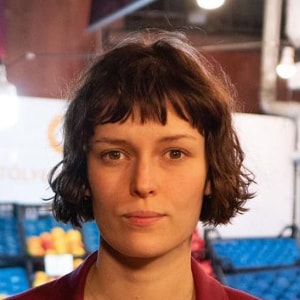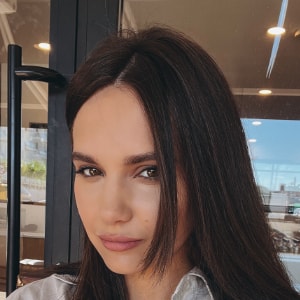Making Dodo style photo shoot
We always use authentic photos in our communication. We insert our products into the context of real life, shoot characters in motion: we catch the moment and avoid staged shots. This guide contains rules and recommendations that help us create vivid photo content.
How we take shots of our customers
We show various people and various different life situations where customers interact with our products. Our goal is to make authentic photos when shooting. This does not mean that we shoot life "as is" and have nothing to do with the content of the shot at all. We contemplate the content:
- We include charismatic characters of any occupation, age, origin and body type in the shoot.
- We choose situations and locations that reflect the main idea – we, as a brand, accompany people in everyday life, we are there for them at various different moments.
- We create realistic scenes, watch the physicality and facial expressions of the model in the frame.
We feel the difference between staged and authentic photography. Artificial light, perfectly combed and dressed characters, postures "as if in real life" - this is not about us, there is no truthfulness about it. For the same reason we don't shoot in studios.
Dodo

Not Dodo

Customers Image
Our customer is a Transformer / Difference maker. They are energetic and reflective on their experiences, a person, who seeks to make an impact on the world around them. They don't just observe events, they participate. By their small daily actions, they make not only their life but also the lives of people around them more comfortable, safe and joyful. Sort of an everyday hero.
External manifestation of the image
- Constant movement. Our character is always busy or passionate about something. They have a lot of things to do: work, hobbies, family, friends.
- Care about others. They are often organizers of a meeting, they share pizza willingly with friends, and frequently order food for their beloved ones.
- Conscious recreation, not hedonism. The characters in our photos are having a rest, but the context always suggests that this is a break after a dynamic activity or in the middle of activities. Hedonism in its purest form is not our story.
Approach to portraying characters
We follow the principle of human-centered communication. We keep a look at our characters’ lifestyle rather than at the product itself. We pay attention to attributes that mark out the context: backpack and books, sports bag and yoga mat, laptop and notepad. As a brand, we accompany people in their everyday life, so we consider the process of product consumption to be the secondary.
Dodo


Not Dodo

Capture the moment
To make photos more lifelike, take the shots of characters in motion, catch their glance or a moment of interaction, convey their mood.
Dodo

Not Dodo

We observe from the outside
The characters of our photos are not looking at the camera, they are doing their own thing, and we act as external observers.
Dodo

Not Dodo

Call attention to the main character
If we are shooting a group of people, choose one of the characters and spotlight the special role they play. This helps to convey the brand’s character and tell a clear story, making the message more emotional and memorable. We achieve the desired effect through the composition: frame the shot in a way where the character is distant from the group or where the glance of the people in the photo is directed at the main character.
Dodo

Not Dodo

Watch the emotions
Our characters don't act out their emotions, but truly experience them. We avoid overtly romantic scenes, artificial and exaggerated reactions. We show a sense of fulfillment, not sensual pleasure; joy, not wild fun. Naturally thoughtful, engaging or relaxed – all of this is about us.
Dodo



Not Dodo



More references on Flickr.
How we take shots of the foods
We always show products in context and make sure they look beautiful and delicious.
What we shoot:
- Various different foods: pizza, dodster, soup, appetizer, dessert, drink.
- The product inside the facility: in the pizzeria, on the counter, on the guests' table.
- The product in the customer’s life context: at home, at the office, at the university, at a holiday or picnic.
- Quality control marks.
Approach to product visuals
- Show food realistically. We want our customers’ expectations and reality to meet, which is why food and beverages on product mock-ups look the way they do in real life. We work with light and angle, but do not "overcook" the picture in post-processing. We use sunlight where it is appropriate.
Dodo

Good contrast,pizza looks authentic, accent is on toppings rather than greasiness Not Dodo

Too much post-processing, product lost authenticity - We shoot the product in context. We show that food is a part of our characters' lives, and we, as a brand, accompany them in various different moments.
Dodo

A group of friends in a restaurant. The product is inserted into the context, the situation is realistic Not Dodo

A young woman with an open box standing in the middle of the street, both hands are full. The shot looks staged 
Bad angle for both the pizza and the character. If we want to show the product and the person at the same time, we put the two photos side by side
How we show the app
We show significant situations within the plot: who makes an order and where, what they order exactly, at what point they post a review. Show the process of using the app, keeping the context realistic.
What situations we show:
- A person places an order at home, on the street, in the office or at the university.
- A guest of a pizzeria orders food.
- A user posts a review.
Dodo


Not Dodo


How we take pictures of staff members
We broadcast our staff members’ attitude towards their work and visitors through these photos.
In our communication we show:
- Pizzeria staff in the hall and in the kitchen.
- Couriers.
- Gemba walks practice when guys from the office go out to the pizzeria and help the cashiers, couriers and pizza makers on their shifts.
- Contact center.
Pizzeria staff members in the hall and in the kitchen
Spotlight moments of attentiveness and care. Call attention to our "no gloves" standard: we do not use gloves in the shot, if allowed. Gloves shift the focus of attention from attitude to hygiene.
What we shoot:
Dodo



Not Dodo


Couriers
We translate dynamics, movement. We show situations at the workplace and circumstances of interaction between courier and client.
What we shoot:
Dodo


Not Dodo


How we take shots of our restaurants
If we shoot pizzeria inside, we translate its atmosphere and coziness. We shoot the exterior from an angle that shows the location of the pizzeria; we follow the aesthetics and get rid of visual garbage in the frame.
What we shoot:
- Exterior: what surrounds the pizzeria, where it is located.
- Empty interior: design, furnishings.
- Interior with people: convey the atmosphere, the spirit of the place.
- Open kitchen: how our food is made.
- Pizzeria kitchens with details: showing the marks on the containers or our refrigerators.
- Children's rooms: with and without children.
- Accessible environment elements: ramp, handrails, accessible toilet, special markings.
Exterior
Choose a good angle, play with light and shadows to make the shots more atmospheric.






Interior
Take shots with people in the institution to show movement, life, real stories.
Read next:

